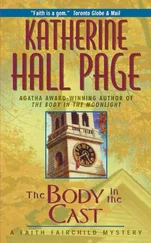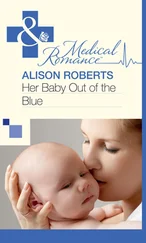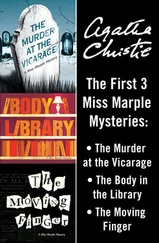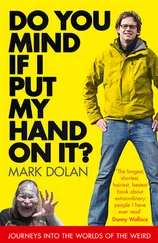Robert Monroe - Journeys out of the body, Practical Guidebook
Здесь есть возможность читать онлайн «Robert Monroe - Journeys out of the body, Practical Guidebook» весь текст электронной книги совершенно бесплатно (целиком полную версию без сокращений). В некоторых случаях можно слушать аудио, скачать через торрент в формате fb2 и присутствует краткое содержание. Жанр: Старинная литература, на английском языке. Описание произведения, (предисловие) а так же отзывы посетителей доступны на портале библиотеки ЛибКат.
- Название:Journeys out of the body, Practical Guidebook
- Автор:
- Жанр:
- Год:неизвестен
- ISBN:нет данных
- Рейтинг книги:5 / 5. Голосов: 1
-
Избранное:Добавить в избранное
- Отзывы:
-
Ваша оценка:
- 100
- 1
- 2
- 3
- 4
- 5
Journeys out of the body, Practical Guidebook: краткое содержание, описание и аннотация
Предлагаем к чтению аннотацию, описание, краткое содержание или предисловие (зависит от того, что написал сам автор книги «Journeys out of the body, Practical Guidebook»). Если вы не нашли необходимую информацию о книге — напишите в комментариях, мы постараемся отыскать её.
Journeys out of the body, Practical Guidebook — читать онлайн бесплатно полную книгу (весь текст) целиком
Ниже представлен текст книги, разбитый по страницам. Система сохранения места последней прочитанной страницы, позволяет с удобством читать онлайн бесплатно книгу «Journeys out of the body, Practical Guidebook», без необходимости каждый раз заново искать на чём Вы остановились. Поставьте закладку, и сможете в любой момент перейти на страницу, на которой закончили чтение.
Интервал:
Закладка:
The solution is to learn about and avoid common stressors associated with the practice, know the mechanics of controlling objects, and understand the principles of making an emergency exit.
Given the possibility of negative phase experiences, it could be advised that practitioners limit the time in phase to fifteen minutes, though it is quite exceptional to maintain the phase for such duration.
Proposed time limits are entirely theoretical and motivated by the fact that natural REM does not normally last longer than fifteen minutes, and, at the risk of side effects due to the alteration of natural cycles, experiments directed at unnaturally prolonging REM are not recommended.
RECOMMENDATIONS
FOR USING THE GUIDEBOOK
During classroom instruction at the School of Out-of-Body Travel, several key factors are known to produce positive and negative effects toward the likelihood of success during individual practice:
Positive Effect on Practice
Negative Effect on Practice
Attentive, thorough study of the
Hasty and inattentive study of
course material
course materials.
Consistent work with practical
Inconsistent application of
elements.
techniques.
Diligent completion of technical
Approximating the techniques
elements.
outside of recommended
guidelines.
A relaxed approach to the subject A hysterical approach to the matter.
matter, “idée fixe”.
Keeping a journal of all initial
A lack of personal analysis when
attempts, followed by recording
problems or a lack of success are
successful phase entrances.
encountered.
Adhering to the recommended
Excessive number of attempts per
number of daily entrance
day.
attempts.
Regular attempts and practice.
Sporadic practice regimen.
Understanding that the author
“I also know everything I need to
knows his field well
and will do as I want". This
attitude is good only for those
who have a great amount of real
practical experience. Reading a
lot on the subject or simply
having knowledge of it is not
experience.
Exercises for Chapter 1
Questions
1.
Which alternative states are included in the term
“phase”?
2.
How does the phase differ from out-of-body travel?
3.
Is the perception of reality different in waking life than in the phase world?
4.
Does the phase have applications to day-to-day life?
5.
What skills must be learned before proceeding to practical use of the phase?
6.
How many types of autonomous phase entrance techniques are there?
7.
What is the difference between direct and indirect techniques?
8.
Which techniques are easiest for the majority of practitioners?
9.
Is it worth trusting various devices and programs that promise to be able to help one enter the phase state?
Why or why not?
10. Should one eat meat when practicing the phase?
Tasks
1.
Try to remember if you have experienced phase encounters in the past.
2.
If you have encountered the phase, what type of technique gained entrance; direct, indirect, or conscious dreaming?
3.
If possible, ask some friends and acquaintances about the subject of out-of-body travel or conscious dreaming.
Do any of them remember a similar experience? What
was it like?
Chapter 2 – Indirect Techniques
THE CONCEPT OF INDIRECT TECHNIQUES
Genuine practice of phase entrance is best begun with the easiest, most accessible methods: indirect techniques, which are conscious actions performed upon awakening from sleep. Some critics incorrectly assume that indirect techniques are not ideal, and prefer to start with direct techniques. However, doing so provides no guarantee for success and results in a large amount of wasted time and effort.
Starting practice with indirect techniques guarantees entrance into the phase.
A specific universal technique that suits every practitioner is a myth since individuals differ widely in personality, psychology, and learning speed. However, there is a relatively easy universal algorithm, or procedure, that accounts for the characteristics of each person and allows for the most rational, effective way to attain the initial phase entrances. This algorithm encompasses cyclic practicing of the indirect techniques covered in this chapter. Without exception, these techniques - despite their varying degrees of difficulty - are suitable for every practitioner who wishes to experience the phase.
Results can be expected immediately following the first few attempts; however, to achieve measurable results, an average of five daily, conscious attempts must be made. Making more than five attempts over the course of a day is fine, too. There is nothing difficult to understand about performing the techniques since they are clearly laid out and based on real internal processes. Remarkably, due to correctly practiced indirect techniques, more than half of students at the live school attain phase entrance after only two days.
Interesting Fact!
Many experienced practitioners prefer to bypass the effort associated with direct techniques and hone their skills through the sole use of indirect techniques.
In order to ensure that one’s efforts are most fruitful and productive, we are going to individually examine each step and principle behind the actions in great detail. Let us start from a description of the techniques themselves, which will actually apply practically just as much to direct techniques as to indirect techniques; as they only differ in character and length of application.
There are plenty of techniques, so after practicing all of the indirect techniques presented in this chapter, a practitioner should be able to choose three or four of the most straightforward, individually effective methods.
Separation techniques will be examined later. They are completely different from usual techniques, which only bring one into the phase, but do not necessarily themselves lead to separation from the body. It is often also necessary to know how to stop perceiving one’s physical body after employing these techniques.
It is necessary to understand when to employ these techniques, and the importance of waking from sleep without opening the eyes or moving the body. Attempting to enter the phase immediately upon awakening must be learned and practiced to mastery since it constitutes the main barrier to successful practice.
After examining the peripheral information surrounding indirect techniques, the cycles of indirect techniques will be examined, including what there are, how they work, and how they are best used.
Successful phase entrance is the direct result of performing these cycles. However, there are exceptions, and it is not completely necessary to proceed with these cycles if one's own mind somehow hints what exactly one should start from, which we will also examine separately.
PRIMARY INDIRECT TECHNIQUES
Nota Bene! The techniques described below are the simple components of indirect technique cycles. Implementing each technique’s description is far from effective. Of the list given below, it behooves the individual practitioner to choose the most comprehensible and interesting techniques, then actively study and apply the instructions for use.
OBSERVING IMAGES
Testing Individual Effectiveness
Читать дальшеИнтервал:
Закладка:
Похожие книги на «Journeys out of the body, Practical Guidebook»
Представляем Вашему вниманию похожие книги на «Journeys out of the body, Practical Guidebook» списком для выбора. Мы отобрали схожую по названию и смыслу литературу в надежде предоставить читателям больше вариантов отыскать новые, интересные, ещё непрочитанные произведения.
Обсуждение, отзывы о книге «Journeys out of the body, Practical Guidebook» и просто собственные мнения читателей. Оставьте ваши комментарии, напишите, что Вы думаете о произведении, его смысле или главных героях. Укажите что конкретно понравилось, а что нет, и почему Вы так считаете.










